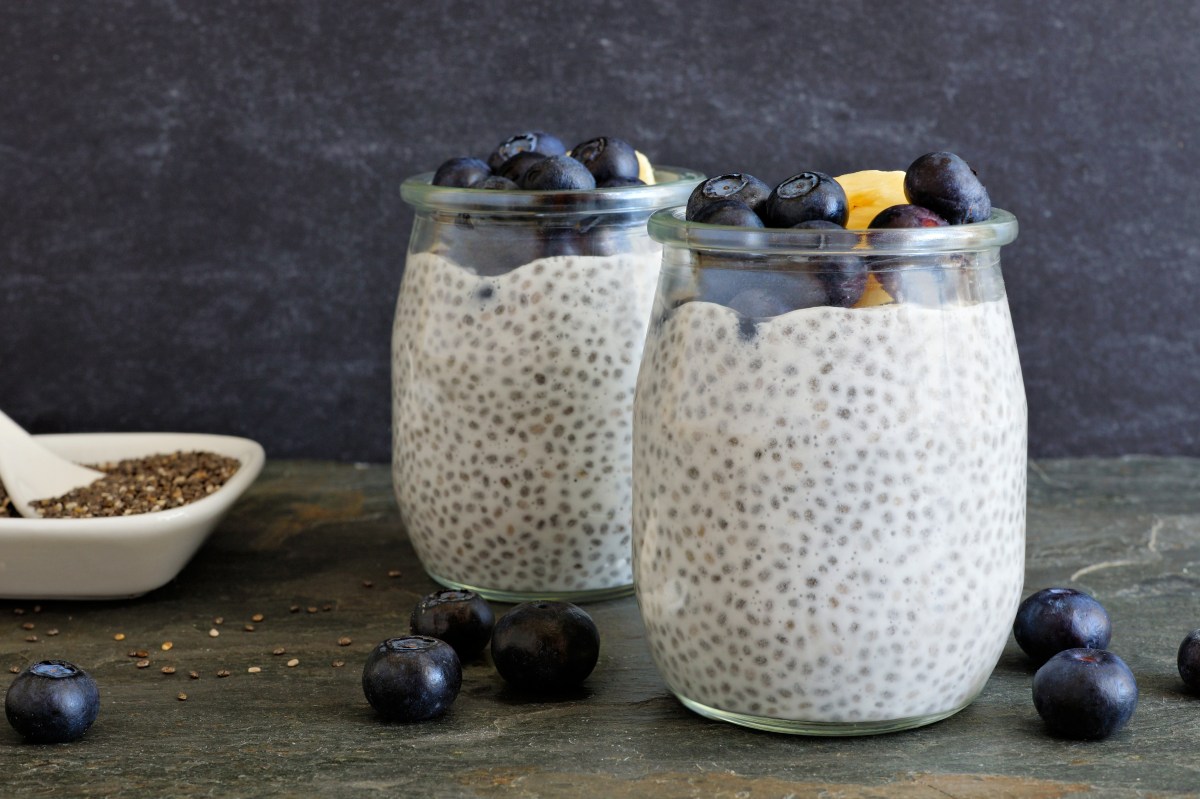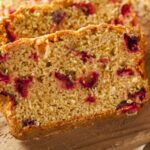Dive into a world of delicious and healthy desserts with our collection of diabetic-friendly chia pudding recipes. Imagine creamy, subtly sweet puddings, bursting with vibrant flavors and textures, crafted to satisfy your sweet tooth without spiking your blood sugar. We explore a variety of milk alternatives, low-glycemic sweeteners, and exciting flavor combinations, offering adaptable recipes to suit diverse dietary needs and preferences. Prepare to discover the delightful versatility of chia seeds as we guide you through creating visually stunning and nutritionally balanced puddings perfect for any time of day.
From the foundational recipes using almond, soy, and coconut milk, to the exploration of sweeteners like stevia, erythritol, and monk fruit, we’ll uncover the secrets to creating chia pudding that’s both delicious and health-conscious. We’ll also journey through a spectrum of flavor profiles, from the rich indulgence of chocolate-peanut butter to the refreshing zest of berry-mint, ensuring there’s a perfect pudding for every palate. Learn how to elevate your chia pudding experience with creative toppings and discover how to modify recipes to accommodate various dietary restrictions, making this delightful treat accessible to everyone.
Diabetic-Friendly Chia Pudding Variations
Chia pudding, a delightful and versatile dessert, can be easily adapted for individuals managing diabetes. By carefully selecting ingredients and controlling portion sizes, you can enjoy the creamy texture and satisfying nutritional benefits without significantly impacting blood sugar levels. This section explores three unique chia pudding recipes, each utilizing a different type of milk to showcase the adaptability of this healthy treat.
Diabetic-Friendly Chia Pudding Recipes
Below are three variations of diabetic-friendly chia pudding, each using a different type of milk and emphasizing low-glycemic ingredients. Remember to always consult with your doctor or a registered dietitian to determine the appropriate portion sizes for your individual needs. These recipes provide approximate nutritional information per serving (approximately ½ cup), and values may vary slightly depending on specific ingredients used.
| Recipe Name | Milk Type | Ingredients | Nutritional Information (Approximate per ½ cup serving) |
|---|---|---|---|
| Almond Milk Chia Pudding with Berries | Unsweetened Almond Milk | 1/4 cup chia seeds, 1 cup unsweetened almond milk, 1/4 cup mixed berries (strawberries, blueberries, raspberries), 1 teaspoon vanilla extract, Stevia or other sugar substitute to taste. | Calories: Approximately 150-180; Protein: 5-7g; Carbohydrates: 10-15g; Fiber: 5-7g; Fat: 10-12g |
| Soy Milk Chia Pudding with Cinnamon and Cocoa | Unsweetened Soy Milk | 1/4 cup chia seeds, 1 cup unsweetened soy milk, 1 tablespoon unsweetened cocoa powder, 1/2 teaspoon cinnamon, Stevia or other sugar substitute to taste. | Calories: Approximately 160-190; Protein: 8-10g; Carbohydrates: 12-17g; Fiber: 6-8g; Fat: 8-10g |
| Coconut Milk Chia Pudding with Mango | Light Coconut Milk | 1/4 cup chia seeds, 1 cup light coconut milk, 1/2 cup diced mango, 1/4 teaspoon grated ginger, Stevia or other sugar substitute to taste. | Calories: Approximately 180-210; Protein: 4-6g; Carbohydrates: 15-20g; Fiber: 4-6g; Fat: 12-15g |
Almond Milk Chia Pudding Preparation with Portion Control
This step-by-step guide details the preparation of the Almond Milk Chia Pudding, emphasizing portion control crucial for managing blood sugar levels.
- In a small bowl or jar, combine 1/4 cup chia seeds and 1 cup unsweetened almond milk. Stir well to ensure all chia seeds are evenly coated.
- Add 1 teaspoon of vanilla extract and your preferred sugar substitute (such as stevia) to taste. Start with a small amount and adjust according to your preference.
- Stir again and cover the bowl or jar. Refrigerate for at least 4 hours, or preferably overnight, to allow the chia seeds to absorb the liquid and create a pudding-like consistency. The longer it sits, the thicker it will become.
- Before serving, gently stir the pudding. Add 1/4 cup of mixed berries. This adds flavor and antioxidants while keeping the overall carbohydrate content relatively low.
- Portion the pudding into a small container (approximately ½ cup). This controlled portion helps regulate carbohydrate intake and prevents blood sugar spikes.
Sweetener Options and Flavor Profiles

Crafting delicious and diabetic-friendly chia pudding hinges on the careful selection of sweeteners and the creative exploration of flavor combinations. The right sweetener can enhance the overall taste without significantly impacting blood sugar levels, while a thoughtfully chosen flavor profile can transform a simple chia pudding into a culinary masterpiece.
Low-Glycemic Sweetener Comparisons
Three popular low-glycemic sweeteners offer distinct advantages for those managing diabetes: stevia, erythritol, and monk fruit. Stevia, a natural sweetener derived from the stevia plant, boasts an intensely sweet flavor, often requiring less to achieve desired sweetness. Erythritol, a sugar alcohol, provides a milder sweetness and is readily absorbed by the body without causing a substantial spike in blood glucose levels. Monk fruit extract, another natural sweetener, offers a slightly sweeter taste than erythritol, with a subtle aftertaste that some find appealing. The sweetness levels and glycemic impact vary significantly; stevia is the most intensely sweet, followed by monk fruit, then erythritol. It’s crucial to note that individual responses to sweeteners can differ, and monitoring blood sugar levels after consumption is recommended to determine personal tolerance.
Unique Flavor Combinations for Diabetic-Friendly Chia Pudding
Five unique flavor combinations can elevate your chia pudding experience while adhering to diabetic-friendly guidelines. These combinations leverage the natural sweetness of fruits and spices, minimizing the need for excessive added sweeteners. Careful consideration of ingredient choices ensures a balance of flavors and textures, creating a satisfying and healthful dessert.
- Chocolate-Peanut Butter: Imagine a rich, decadent pudding with the creamy smoothness of peanut butter harmonizing beautifully with the deep, dark notes of unsweetened cocoa powder. A touch of stevia or erythritol adds sweetness without the blood sugar surge. The visual appeal is a gorgeous swirl of dark brown and creamy beige.
- Berry-Mint: This refreshing combination features a vibrant mix of fresh or frozen berries (strawberries, blueberries, raspberries) and a hint of fresh mint. The bright red and deep purple hues of the berries are punctuated by the verdant green of the mint leaves, creating a visually striking dessert. Monk fruit or erythritol complements the naturally sweet berries.
- Cinnamon-Apple: A warm and comforting flavor profile, this pudding blends the sweet and tart notes of apples with the comforting spice of cinnamon. The pudding takes on a warm, golden-brown hue, reminiscent of apple pie. Erythritol provides a subtle sweetness, enhancing the natural flavors of the apples and cinnamon.
- Coconut-Mango: The tropical twist features the creamy texture of coconut milk combined with the sweetness of ripe mango. The vibrant yellow-orange color of the mango stands out against the white coconut milk, creating a bright and sunny dessert. Stevia adds a touch of sweetness, complementing the natural sweetness of the mango.
- Vanilla-Almond: A classic and elegant choice, this pudding highlights the pure vanilla flavor, complemented by the subtle nutty aroma of almond extract. The creamy, off-white pudding is visually simple yet sophisticated. A small amount of erythritol provides a delicate sweetness without overpowering the vanilla and almond flavors.
Serving Suggestions and Storage
Diabetic-friendly chia pudding, with its creamy texture and customizable flavors, offers a versatile canvas for culinary creativity. Moving beyond the classic bowl, let’s explore exciting ways to serve this healthy dessert and ensure it remains fresh and delicious. Proper storage is key to maintaining its quality and preventing spoilage, so we will also cover best practices for preservation and portioning.
Proper storage and serving techniques significantly enhance the enjoyment and longevity of your diabetic-friendly chia pudding. Consider these suggestions to elevate your experience.
Creative Serving Suggestions
Imagine a vibrant parfait layered with chia pudding, fresh berries bursting with color, and a sprinkle of crunchy nuts. This visually appealing and flavorful combination provides a delightful textural contrast and a balanced nutritional profile. Or, picture a chia pudding parfait nestled in a charming mason jar, perfect for on-the-go enjoyment or a sophisticated presentation. Alternatively, consider incorporating chia pudding as a component in a larger meal; for instance, a refreshing summer salad could benefit from its creamy texture and subtle sweetness. The possibilities are as diverse as your palate.
Storage Methods for Maintaining Freshness
To maintain the optimal texture and flavor of your chia pudding, refrigeration is crucial. Store it in an airtight container in the refrigerator. This prevents the pudding from absorbing unwanted odors and helps maintain its creamy consistency. Generally, chia pudding will remain fresh and enjoyable for up to five days when stored correctly. After five days, the pudding might start to lose its texture and freshness, but it remains safe to consume. However, always prioritize your senses; if it looks or smells off, discard it.
Packaging Individual Portions for Meal Prepping
Meal prepping individual portions of chia pudding is a fantastic strategy for managing blood sugar levels and simplifying healthy eating. Use small, reusable containers, such as glass jars or plastic containers with airtight lids. This allows for easy grab-and-go portions throughout the week. For added convenience and to maintain the pudding’s integrity, consider lining the containers with parchment paper before adding the pudding. This makes removing the chia pudding easier and cleaner. Properly sealed and refrigerated portions can last up to five days, ensuring a readily available healthy treat.
Unlocking the potential of chia pudding for a diabetic-friendly diet is easier than you might think. With a little creativity and the right ingredients, you can enjoy the creamy texture and satisfying sweetness of chia pudding without compromising your health goals. This exploration has revealed the incredible versatility of chia seeds, allowing for countless flavor combinations and dietary adaptations. Remember, portion control and mindful sweetener choices are key to maintaining blood sugar levels. So, embark on your chia pudding adventure, experimenting with different flavors and toppings to discover your perfect, healthy, and delicious creation.
FAQ Insights
Can I use other types of milk besides almond, soy, and coconut?
Yes, you can experiment with other milk alternatives like oat milk or cashew milk. Just be mindful of the carbohydrate content and adjust sweetener accordingly.
How long can I store chia pudding in the refrigerator?
Properly stored chia pudding will last for 3-5 days in the refrigerator. Ensure it’s stored in an airtight container.
Can I make chia pudding ahead of time?
Absolutely! Chia pudding is perfect for meal prepping. Make a batch at the beginning of the week and enjoy it throughout.
What happens if I use too much chia seeds?
Using too many chia seeds can result in a very thick, almost gelatinous pudding. Start with the recommended amount and add more gradually if needed.

:max_bytes(150000):strip_icc()/Dulce-de-Leche-Coconut-Energy-Balls-beauty-886-833d190da914428484fcf3a907dd2605.jpg)
